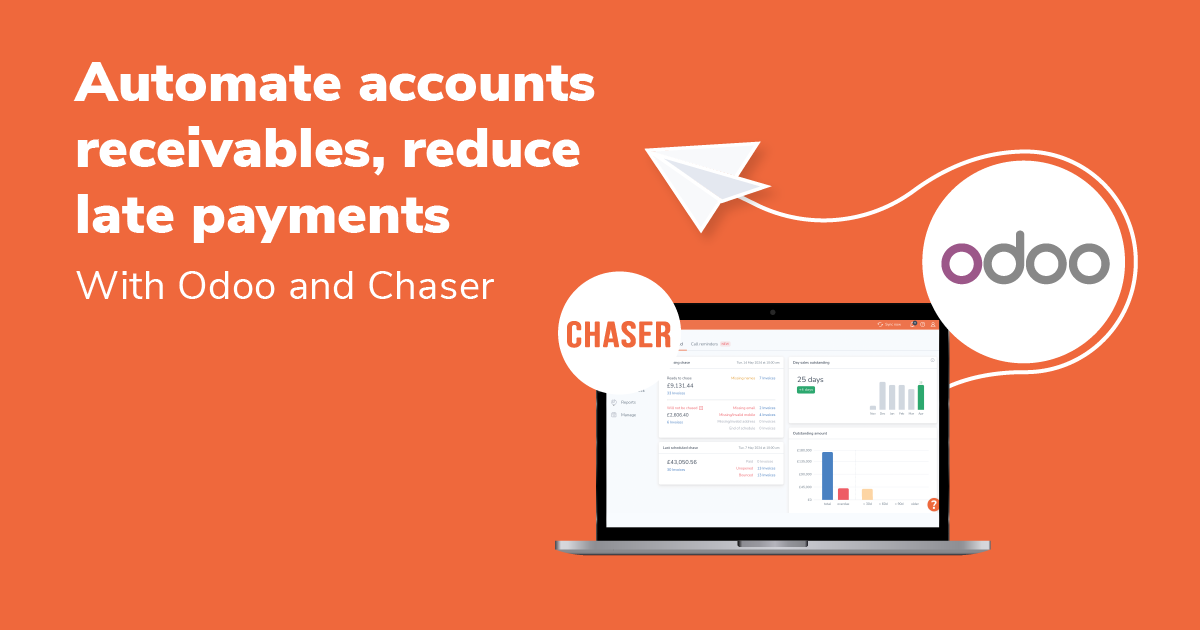If you're like most business owners, you're always looking for ways to improve your accounts receivable process. After all, the faster you can get paid, the more money you can keep in your business!
In this blog post, we will discuss some easy ways that you can streamline your accounts receivable process and make it more efficient.
We'll also talk about some of the common problems that businesses face when it comes to accounts receivable, and how you can avoid them.
By following these tips, you can improve your accounts receivables process and get paid faster!
Why is your accounts receivable process so critical?
Your accounts receivable process is critical because it directly impacts your business cash flow, and cash flow is king!
If you have a strong accounts receivable process in place, you will be able to keep more money in your business. More liquidity means more opportunities for growth and expansion.
Additionally, a more efficient accounts receivable process can help you avoid common problems, such as late payments and bad debt, by staying on top of your receivables.
On the other hand, if your accounts receivable process is weak, it can quickly lead to cash flow problems. This can put a strain on your business and may even lead to financial difficulties.
This is particularly true in light of the current economic conditions. With businesses struggling to stay afloat, it is more important than ever to have a strong accounts receivable process in place.
Many companies of all scales are struggling with an endemic late payment crisis. Reports show that in the US alone, businesses are owed $825 billion in late payments. In the UK, the figure is an estimated £50 billion, with 45% of small businesses experiencing late payments.
This problem is not going away anytime soon and it is only getting worse. Combined with the fact that many businesses are already operating on tight margins, due to the impact of the Covid-19 pandemic, companies need to find a way to improve their accounts receivable process In order to survive.
What are the challenges businesses face when implementing an effective accounts receivable process?
There are a wide range of challenges businesses face when trying to improve their accounts receivable process. Here are some of the most common ones:
- Lack of visibility into customer payment behaviour - Many businesses lack visibility into their customers' payment behaviour. This makes it difficult to assess which customers are likely to pay on time and which ones are at risk of defaulting.
- Inadequate credit control processes - Inadequate credit control processes can lead to large amounts of money being owed to the business by customers. This can put a strain on cash flow and make it difficult to meet financial obligations.
- Poor communication with customers - Poor communication with customers can lead to misunderstandings about payment terms and expectations. This can result in late or missed payments, which can damage relationships with customers.
- Difficulty tracking down invoices - If invoices are not properly tracked, it can be difficult to determine which customers owe money to the business. This can make it difficult to collect payments in a timely manner.
- Manual processes and inefficient systems - Manual processes and inefficient systems can make it difficult to manage invoices and payments. This can lead to errors and delays in processing payments, which can impact cash flow.
- Inadequate resources and training - Inadequate resources and training can make it difficult for staff to properly manage invoices and payments. This can result in errors and delays in processing payments, which can damage relationships with customers.
All of these factors can contribute to problems with cash flow, which can be critical for small businesses. It is important to have systems and processes in place to effectively manage invoices and payments. Having the right resources and training can also help to avoid problems.
Despite the challenges, there are a number of ways businesses can overcome them and improve their accounts receivable process. By taking a holistic approach and implementing best practices, businesses can ensure they get paid on time, every time.
So, how do they achieve this?
What are some best practices for improving the accounts receivable process?
There are a number of best practices businesses can use to improve their accounts receivable process. By streamlining their invoicing process, automating payments, and improving communication with customers, businesses can improve their accounts receivable process and get paid on time.
Some of the most effective best practices include:
Automating the accounts receivable process
One of the primary issues with implementing an effective and cohesive accounts receivable process is it is effort and resource intensive. Businesses need to manually generate invoices, track customer payments, and follow up on late payments - which can quickly become overwhelming, especially for businesses with a large customer base or smaller staff numbers.
One way businesses can streamline their accounts receivable process is by automating as much of it as possible. Automation can help businesses save time and money by reducing the amount of manual labour required to process invoices and track payments.
Simply put, by automating the accounts receivable process, businesses can free up time and resources that can be better used elsewhere.
There are a number of software programs available that can automate various aspects of the accounts receivable process, from invoice generation to payment tracking. By automating the accounts receivable process, businesses can free up time and resources that can be better used elsewhere.
There are a number of software programs available that can automate various aspects of the accounts receivable process, from invoice generation to payment tracking.
Chaser's market-leading automated credit control platform is the ideal solution for businesses looking to streamline their accounts receivable process.
With Chaser, businesses can automatically send reminders and follow-ups to customers who haven't paid their invoices on time, keeping track of payments and saving valuable time and resources.
All reminders can be edited to match the brand's voice and style, and customers can be segmented into different groups to receive targeted payment reminders. Chaser offers all the benefits of automation, without losing the human touch!
Have effective credit control policies in place
Having a good credit control policy is vital for any business, big or small. By having a set of procedures in place to manage and chase up late payments, businesses can ensure that they are getting paid on time and keeping on top of their cash flow.
A company's specific credit control policy will be tailored to their business model, but there are some general best practices that all businesses should follow:
- Set clear payment terms and conditions from the outset - Make sure that your invoices include clear payment terms and conditions, so that your customers are aware of when they need to pay by.
- Follow up payments as soon as they're due - Don't wait until your customer is overdue before you start chasing them for payment. As soon as an invoice is due, send a reminder.
- Offering different payment options - Some customers may prefer to pay by direct debit, so offering this as an option could help you get paid faster. Some customers may prefer to pay via direct debit, so consider offering this as an option. With Chaser's payment portal, you can offer your customers a range of different payment options, so they can pay you in the way that suits them best.
- Being flexible with payment dates - If a customer is having difficulty making a payment on time, see if there is any flexibility you can offer in terms of when they make the payment.
- Chase up payments by phone or email - If you haven't had a response to your payment reminder, chase the customer up by phone or SMS. SMS messages can often be more effective as they are more likely to be read and responded to. With Chaser, you can send automated SMS reminders to your customers, which will save you time and hassle.
By implementing a proactive and effective credit control policy, you can reduce the number of late payments you receive and improve your cash flow.
Outsource your accounts receivables to the professionals
Sometimes it's just easier to let a professional take care of a problem for you. Accounts receivable management is a complex and time-consuming task, and it's one that many businesses simply don't have the resources to handle effectively.
If you're struggling to keep on top of your accounts receivable, consider outsourcing the task to a professional debt credit control agency. The experts at these agencies are experienced in managing all aspects of accounts receivable, from issuing invoices to collections.
Outsourcing your accounts receivable can save you time and money, and it can help improve your cash flow. It's a good solution for businesses that don't have the internal resources to effectively manage their accounts receivable.
If you're considering outsourcing your accounts receivable, make sure to do your research and choose a reputable agency. Ask for references, and check out online reviews before making your decision. Outsourcing your accounts receivable can be a great way to improve your business's cash flow - but only if you choose a reputable and reliable agency.
Here at Chaser, we're experts in outsourced credit control management. We've helped thousands of businesses improve their cash flow and get back on track. If you're considering outsourcing your accounts receivable, we'd be happy to chat with you about how we can help.
Offer both a carrot and a stick
We'd all prefer to treat our customers as partners in our successes, but if you are being consistently paid late, then you need to get tough.
One way to do this is by offering both a carrot and a stick - in other words, give them a discount for paying early, but also charge them interest if they don't.
Early payment discounts are a great way to encourage customers to pay on time, but you need to make sure that the discount is significant enough to make a difference.
There are a few different ways to offer discounts for early payments, but the most important thing is to make sure that the discount is significant enough to make a difference.
One way to do this is to offer a tiered discount structure, where the longer the payment period, the higher the discount.
Another way to encourage early payments is to offer a flat discount for all payments made within a certain time period.
Whatever approach you take, make sure that you are clear about the terms and conditions so that there is no confusion.
You also need to make sure that your late payment penalties are clear and unambiguous.
In the UK, you are legally allowed to charge interest on late payments, and charge a fee for your collection efforts. This can be a great way to encourage prompt payment.
Of course, you need to make sure that you are fair and reasonable in your approach - but if you're being constantly let down by late payments then you have a right to protect your business.
Let Chaser help you improve your accounts receivables process
Chaser was set up with one aim: to help businesses get paid on time, every time.
We know how frustrating it is to chase up late payments, and we also know how much of a drain it can be on your resources.
That's why we've developed a range of automated tools to help you get paid quickly and efficiently. From automatic payment reminders to customizable payment plans, we've got you covered.
So if you're sick of chasing up late payments, why not give Chaser a try? We offer a free 14-day trial, so you can see how our tools can help your business.
Sign up today and start getting the payments you deserve!




